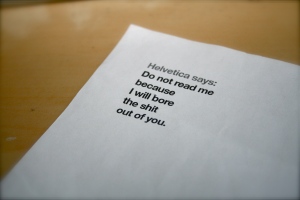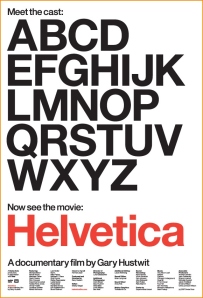My iPod took over one day about three months ago. I can’t recall the hows or whys behind the siege, but I suddenly found myself isolated by my Bose headphones, squinting at that little 2.5-inch display, watching movies and television shows. My bus rides to and from work and school were all-consumed by this tiny device, and it was two months before I realized how ridiculous it all was. I had nothing to show for this time of transit. Instead, I was slowly ticking off my list of unwatched shows and ignoring that world around me.
Then, one day, I found a great deal on a book that I had been meaning to purchase since its release; No One Belongs Here More Than You by Miranda July. It’s a collection of short stories—the first book from the mastermind behind Me and You and Everyone We Know. As I patiently awaited its arrival in the mail, it occured to me that this was the perfect opportunity to retaliate against my iPod and reclaim my bus rides for myself.
 Armed with a sunny yellow dust cover set in Helvetica Light, I boarded the bus, proud to carry the tome under my arm. I carefully chose a window seat, set my messenger bag next to me, and cracked the cover.
Armed with a sunny yellow dust cover set in Helvetica Light, I boarded the bus, proud to carry the tome under my arm. I carefully chose a window seat, set my messenger bag next to me, and cracked the cover.
What followed can only be described as glorious. A new world opened up before me, and with each turned page my imagination filled with images of her characters. During one trip to work, I looked up halfway through a chapter and looked around me. My memory tells me it was a bright, sunny day, but perhaps it lies. Regardless, I saw her characters in the seats next to, behind of, and in front of me. Each face on each person in each seat was riddled with life.
That girl over there, did she just come back from Newberg after selling her body to an old fat woman? Is that the old man that did ecstasy with his elderly friend in hopes of winning a date with his teenage sister? That lady talking to the bus driver looks like she might give swim lessons on her kitchen floor.
Miranda July’s stories are bizarre, twisted forays into the lives of others. Each short story is written in the nameless first-person narrative, and each character is an exaggeration in depth and complexity. Yet the more I read, the more I can relate to what they are experiencing and dreaming. And the more I read, the more I realized that they probably weren’t that exaggerated after all. Each character has excruciating interactions with others that resonate within my soul. Their vibrant lives parallel ours by speaking what we dare never speak, thinking what we shudder to think, and exposing what we strive to keep hidden.
 I think it helped that I averaged one short story per bus trip, opening and closing the book like a window into the real world of those around me. And occasionally I would pause in my reading and gaze out the window at the world, arbitrarily choosing a face for a character’s name, and imagining what stories could be told about everyone else. A smile would creep its way across my face, and suddenly the world just made a little more sense.
I think it helped that I averaged one short story per bus trip, opening and closing the book like a window into the real world of those around me. And occasionally I would pause in my reading and gaze out the window at the world, arbitrarily choosing a face for a character’s name, and imagining what stories could be told about everyone else. A smile would creep its way across my face, and suddenly the world just made a little more sense.
Then, as I closed the cover for the last time, I realized how much I missed reading on the bus. And how much I didn’t miss listening to my iPod. The battle had been waged and my iPod sulked off to the corner to lick his wounds. In fact, I have hardly listened to it since then, choosing instead to crack open another book, and then another. The joy of reading has returned, and I have turned something passive into something productive again.







